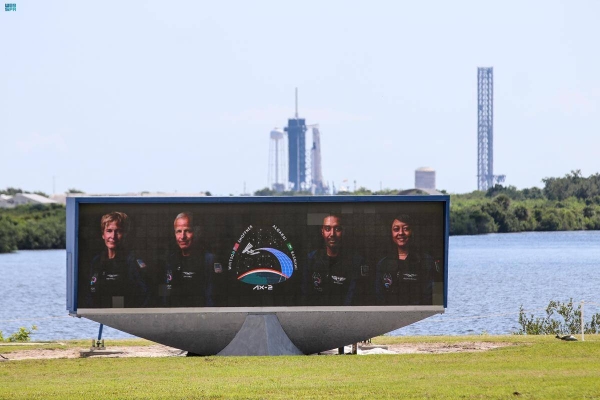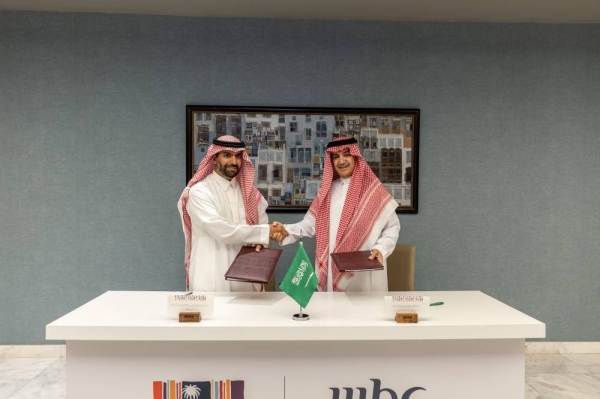
JEDDAH: The Kingdom will launch its 16th satellite into space on Tuesday: The Saudi Geostationary Satellite 1 (SGS-1).
It will provide telecommunications capabilities, stronger internet connectivity, TV and secure communications in the Middle East, North Africa and Europe.
Developed by a team from King Abdul Aziz City for Science and Technology (KACST), it will be launched in French Guiana by Arianespace, which provides launch services for all types of satellites.
KACST, a government institution that supports and enhances applied research, collaborated with Lockheed Martin to manufacture the SGS-1.
The institution has so far launched 15 satellites into the low Earth orbit, said the SGS-1 program director from KACST, Dr. Badr Al-Suwaidan.
KACST has collaborated with China in the Chang’e 4 mission to explore the far side of the moon; provided advanced services for remote-sensing systems; and participated in the launch of an advanced system for maritime monitoring and tracking with satellite data, which includes daily coverage of 30,000 vessels worldwide.
Lockheed Martin is a global security and aerospace company that is engaged in the research, design, development, manufacture, integration and sustainment of advanced technology systems and services. Its relationship with Saudi Arabia began in 1965.
“Our goal is to deliver advanced technology and security solutions to the Saudi government and commercial sector in support of Vision 2030,” said Lockheed Martin CEO Joseph Rank.
The SGS-1 was manufactured, tested and operated with the participation of Saudi engineers and scientists.
The agreement of the launch service between Arianespace, Arabsat and KACST was announced in 2015.
In 2018, Saudi Crown Prince Mohammed bin Salman oversaw manufacturing stages during his visit to Lockheed Martin’s San Francisco headquarters.
During this visit, the crown prince signed the final piece that was to be placed on the SGS-1 before its launch, with the words: “Above the highest clouds.”
The satellite will be launched by the Guiana Space Centre, which is located in French Guiana because it is near the equator; it has a small population; and it is not prone to natural disasters. The vehicle that will launch the satellite is the European Ariane 5.
The #SGS-1 provides secure satellite communication on the Ka-band for the government of #Saudi Arabia @BadrDrSpace@kacst@Arianespace@LockheedMartin@ISRO#HellasSat#Ariane5#Arianespace#VA247https://t.co/OtG3hA1vv3pic.twitter.com/EsBGp1J56h— Arab News (@arabnews) February 5, 2019
The SGS-1 “provides secure satellite communication on the Ka-band for the government of Saudi Arabia. It provides 35 gigabits per second,” said Al-Suwaidan, hailing “a new era.”
The Ka-band allows for higher bandwidth communication, supporting greater frequency reuse in geographically isolated spots.
Spot beams are satellite signals that are concentrated in power so that they cover a limited geographic area.
Spot beams are used so that only Earth-based stations in a particular area can properly receive the satellite signal.
“The program includes technology transfer for more than 15 engineers trained and certified by the manufacturer Lockheed Martin,” said Al-Suwaidan.
There will be more “space achievements under the new Saudi space authorities,” and under “the leadership of the first Arab astronaut, Prince Sultan bin Salman,” Al-Suwaidan added.
The SGS-1 was assembled at Lockheed Martin’s facilities in Denver, Colorado and Sunnyvale, California. In Sunnyvale, it underwent critical environmental testing.
“We had a very accommodating and smooth launch campaign thanks to the team from KACST, Arabsat and Lockheed Martin. We’re ready for the launch,” said Al-Suwaidan. “We’re grateful for the collaboration and service provided by Arianespace.”
The SGS-1 will be the 46th Lockheed Martin satellite to be launched by Arianespace. The launcher’s main stage will splash down in the Gulf of Guinea.
Thierry Fahem, the SGS-1 program director from Arianespace, wished the satellite “a long life.”









